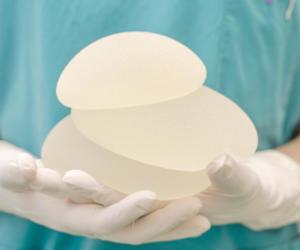Breast augmentation, also known as an augmentation mammoplasty, is a surgical procedure to increase breast size.
During this procedure, breast implants are placed under the breast tissue or chest muscles. For women, breast augmentation is a way to enhance their image and self-confidence.
For others, breast augmentation is a part of breast reconstruction after surgery for other conditions that affect the breasts.
If you are considering breast augmentation, consult a plastic surgeon. Make sure you understand what surgery involves, including possible risks, complications, and follow-up care.
Here you can find out what to expect from your breast augmentation procedure.
Breast augmentation can be performed in a surgical center or hospital outpatient facility. You will likely be released the same day. The procedure rarely requires a hospital stay.
In select cases, breast augmentation is done under local anesthesia in which you're awake and only your breast area is numbed.
In most cases, though, breast augmentation is done under general anesthesia, in which you're asleep for the surgery.
To insert the breast implant, your surgeon will make a single cut (incision) in one of three places:
- In the crease under your breast (inframammary)
- Under your arm (axillary)
- Around your nipple (periareolar)
After making an incision, the surgeon will separate your breast tissue from the muscles and connective tissue of your chest. This creates a pocket either behind or in front of the outermost muscle of the chest wall (pectoral muscle).
The surgeon will insert the implant into this pocket and center it behind your nipple. Saline implants are inserted empty and then filled with sterile salt water once they're in place.
Silicone implants are pre-filled with silicone gel. When the implant is in place, the incision will be closed — typically with stitches (sutures) — and bandaged with skin adhesive and surgical tape.
After the procedure, Soreness and swelling are likely for a few weeks after surgery. Bruising is possible, too. Expect your scars to fade gradually over time, although they won't disappear completely.
While you're healing, it might help to wear a compression bandage or sports bra for extra support and positioning of the breast implants. Your surgeon might prescribe pain medication as well.
Follow your surgeon's instructions about returning to regular activities. If you don't have a physically demanding job, you might be able to return to work within a few days to a week.
Avoid strenuous activities — anything that could raise your pulse or blood pressure — for at least two weeks. While you're healing, remember that your breasts will be sensitive to physical contact or jarring movements.
If your surgeon used sutures that don't absorb on their own or placed drainage tubes near your breasts, you'll need to have the sutures or drainage tubes removed at a follow-up appointment.
If you notice warmth and redness in your breast or you run a fever, you might have an infection. Contact your surgeon as soon as possible.
Also, contact your surgeon if you experience shortness of breath or chest pain.
As you anticipate the results of your breast augmentation, always remember to keep your expectations realistic. Breast augmentation can alter the size and shape of your breasts.
The surgery also has the capability of improving your body image and self-esteem. However, if you are looking for perfection, you might be disappointed.
Be sure to remember that your breasts will continue to age after the procedure. Weight loss or gain might change the appearance of your breasts, you might need a revision operation to correct these issues.








